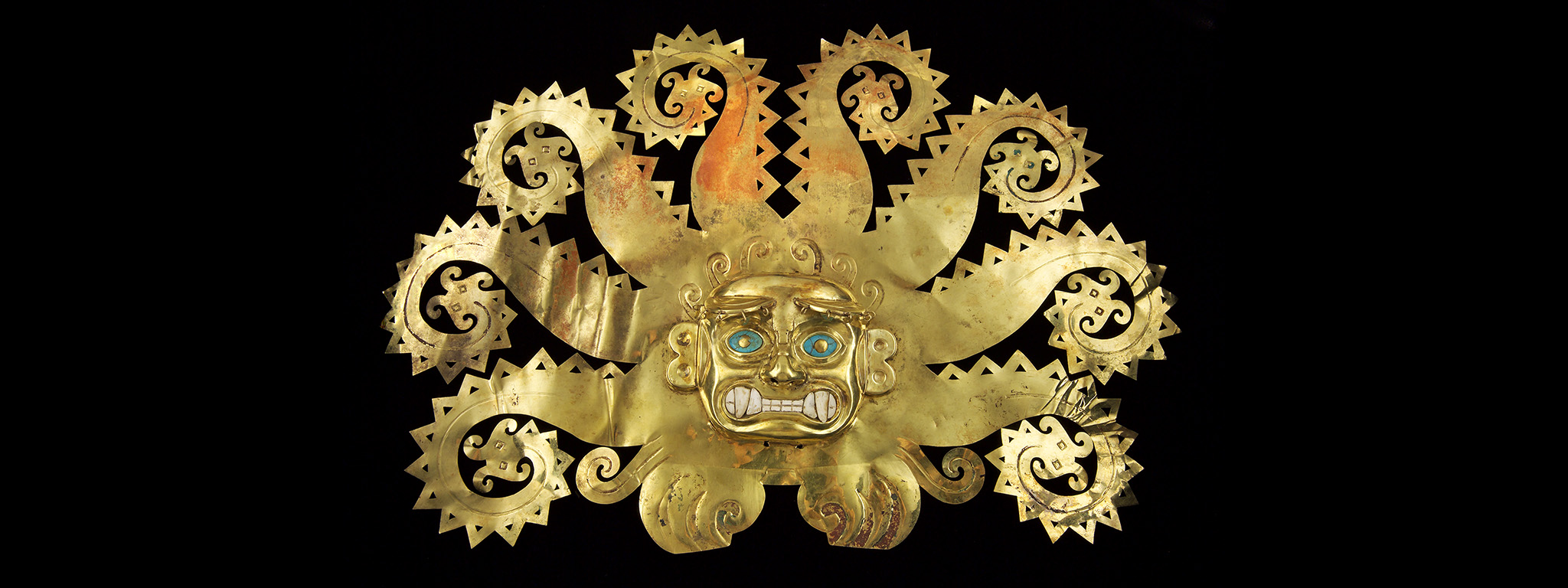Golden Kingdoms: Luxury and Legacy in the Ancient Americas
By Joanne Pillsbury, Timothy Potts, and Kim N. Richter
Golden Kingdoms: Luxury and Legacy in the Ancient Americas explores the development of luxury arts from 1200 BC to the beginnings of European colonization in the sixteenth century. Made of precious metals and other substances esteemed for their color and luminescence, these works were imbued with sacred power by the people who created and used them.
In the ancient Americas, metals were employed primarily to create objects for ritual and regalia rather than for tools, weapons, or currency. The use of gold, transformed into objects for gods and rulers, provides the central narrative and trajectory of the exhibition, from Peru in the south to Mexico in the north. However, other materials were often deemed far more valuable. Jade, rather than gold, was the most precious substance to the Olmecs and the Maya; and the Incas and their predecessors prized feathers and textiles above all.
These works were often transported across great distances and handed down over generations, making them a primary means by which ideas were exchanged between regions and across time. Crucial bearers of meaning, luxury arts were especially susceptible to destruction and transformation; thus the works in the exhibition are rare testaments to the brilliance of ancient American artists.
Download Spanish language gallery texts
Descargue los textos de la galería en español >
Join the curators on walkthroughs of the exhibition in these four videos.
Siga a los curadores en visitas guiadas de la exhibición en estos cuatro videos.
FOR GODS AND KINGS
The Central Andes, 1200 BC–AD 200

The luxury arts of the ancient Americas are distinguished by their highly valued materials, their symbolically charged iconography, and their restricted use and consumption by the religious and political elites of society. Certain shells and stones were believed to have been emitted, inhabited, or consumed by gods, and the transformation of these materials into regalia and ritual objects linked the wearer to the gods’ powers.
Gold too was closely associated with the supernatural realm. Relatively soft and malleable, the metal is unsuitable for most utilitarian purposes, and the earliest gold objects are primarily ornaments found in the burials of powerful rulers. Even in later periods, when knowledge of copper working enabled the manufacture of tools and weapons, metal objects were first and foremost expressions of social status, political power, and religious beliefs.
The imagery of these early works speaks to a rich supernatural world of snarling, fantastic beasts and other extraordinary beings. Because luxury arts were relatively lightweight and easily transported, such imagery may have spread quickly across the Andean region, promoting an exchange of both things and ideas.
MASTERS OF THE UNIVERSE
The Moche of Peru’s North Coast, AD 200–850
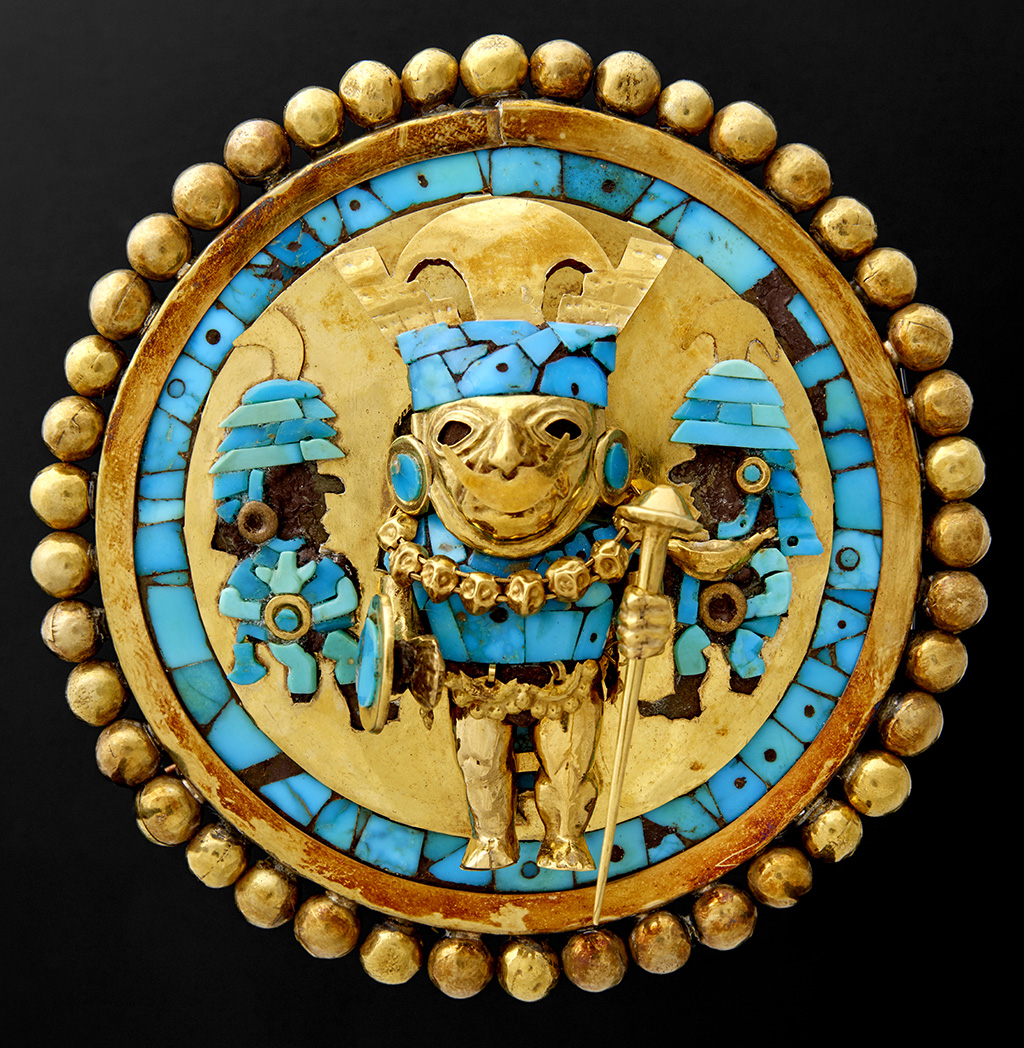
The years between AD 200 and 850, once known to scholars as the Mastercraftsman period, witnessed striking developments in ceramic, textile, and especially metal arts. Several cultures thrived on Peru’s desert coast during this time, including the Nasca to the south and the Moche to the north. The Moche civilization, composed of independent polities that shared a religious and artistic tradition, built monumental centers in rich agricultural valleys and exploited the abundant resources of the Pacific Ocean. At times, these separate communities drew together to form a larger polity; at other times, an intense rivalry existed, fueling an extraordinary florescence in the arts.
Moche artists used gold, silver, and copper to create ritual implements and ornaments. They were particularly inventive in combining metals and developed innovative techniques to achieve a desired effect, including some that were more sophisticated than those known in Europe at the time. Scientific excavations over the past thirty years have revealed the remarkable achievements of these artists and the role they played in embodying an ideology of power through the regalia of the Moche lords.
IMPERIAL RADIANCE
The Central Andes, AD 850–1534
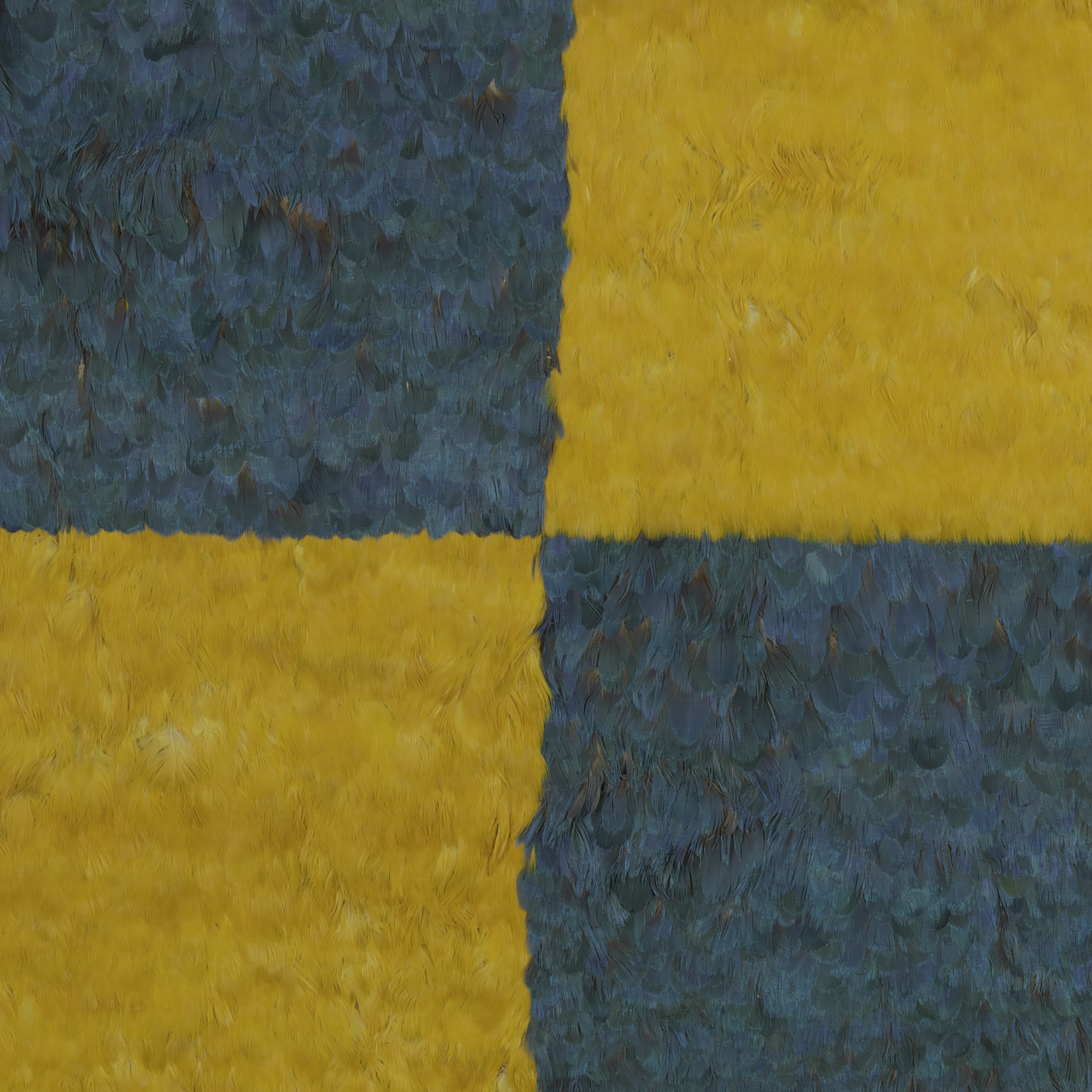
The first Andean empires—states that ruled over extensive and diverse territories—arose in the second half of the first millennium AD. The Wari Empire, based in Ayacucho in what is today the central Peruvian highlands, established a trade network that extended some 800 miles (almost 1,300 km), south to north, over which llama caravans facilitated the exchange of valued materials such as tropical feathers, marine shells, and camelid fiber. On the North Coast, the Lambayeque (also known as Sicán) and later Chimú cultures built upon earlier Moche artistic traditions, but they expanded production to almost an industrial level.
The Inca civilization in turn inherited the achievements of these earlier cultures, transforming itself from a small polity with localized influence in the Cusco region into the largest premodern empire in the Southern Hemisphere. With remarkable speed, the Incas conquered much of western South America, some 2,600 miles (4,200 km), from Santiago, Chile, to what is now the border between Ecuador and Colombia. The Inca state exerted rigid control over its domain, imposing a bold new imperial visual style that it disseminated through carefully controlled ritual and economic practices. Atahualpa, one of the last Inca emperors, was embroiled in a bitter civil war in the years prior to 1532, fatally weakening the empire at the time Francisco Pizarro and his small band of soldiers from Spain—an even larger and more global empire—arrived in Cajamarca.
LANDS BETWEEN THE SEAS
The Northern Andes and Central America, 600 BC–AD 1600
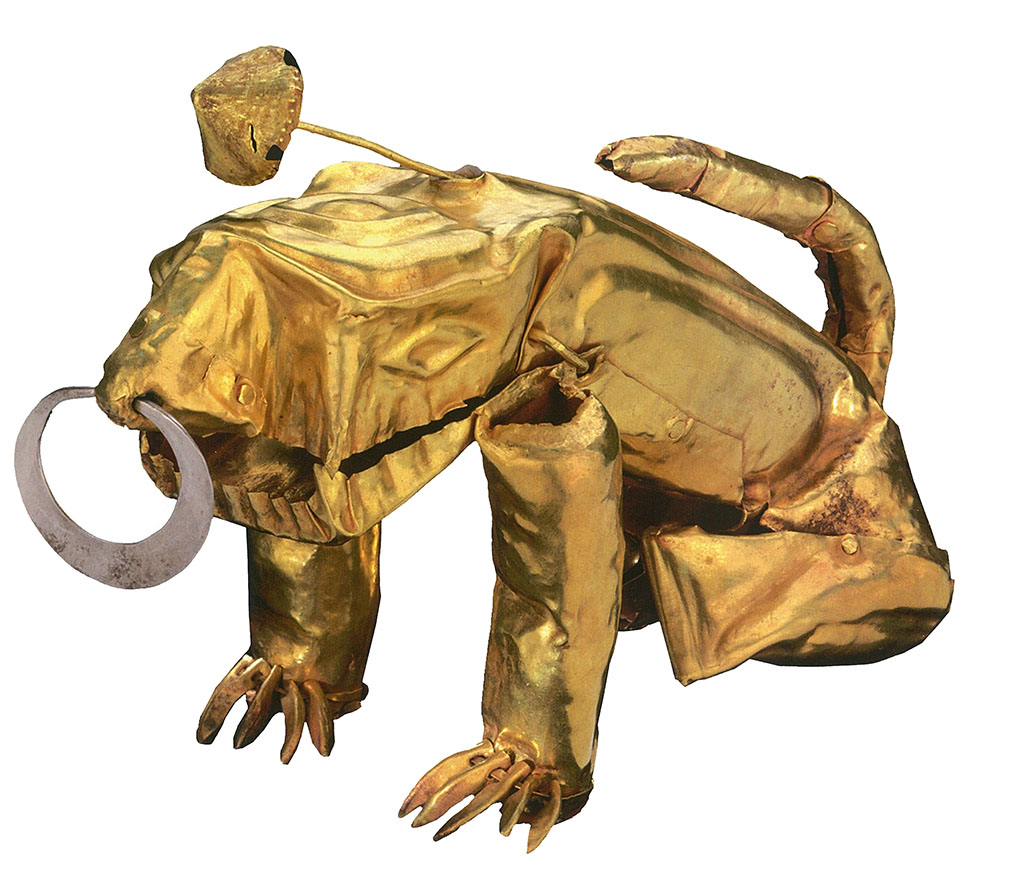
In 1502, Christopher Columbus’s fourth voyage brought him to the coast of Central America, to a region he would later name Costa Rica, or “rich coast.” Lands that are now part of Colombia, Panama, and Costa Rica were then home to thriving polities that fostered extensive and inventive metalworking traditions.
The inhabitants of this region had a much different understanding of metal and its uses compared to that of sixteenth-century Europeans. In ancient Colombia and Central America, gold was part of a complex symbolic system associated with divine power. Already considered generative, gold was made more so through its transformation into votive figures, or the regalia of political and religious leaders.
A dynamic trade network existed between these regions and those farther north in Mesoamerica, a cultural area extending from northern Central America to northern Mexico. Ritual axes made of jadeite—the most esteemed material in Mesoamerica—were traded into Costa Rica, where artists transformed them into pendants. They would split the axes into halves, fourths, or even sixths so that their sacred power could be extended.
THE SACRED CENOTE AT CHICHEN ITZA
Mesoamerica, AD 750–AD 1521
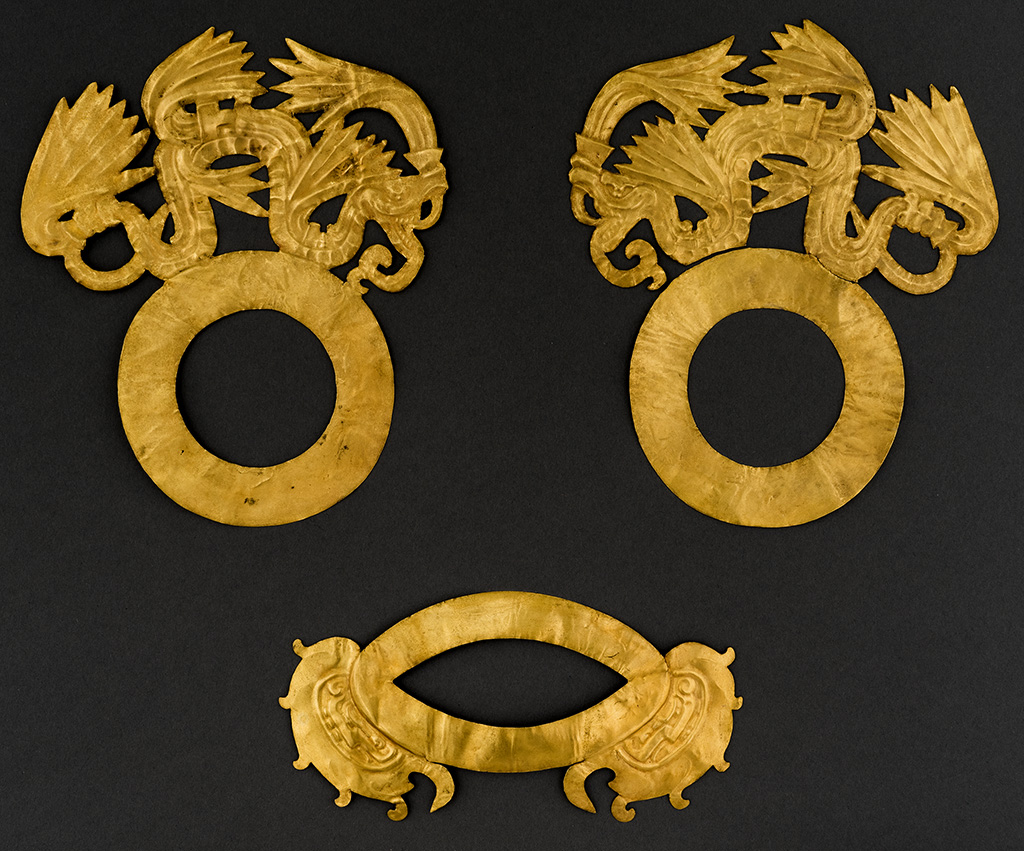
Chichen Itza, on Mexico’s Yucatan Peninsula, was a great Maya urban and ritual center that drew pilgrims from across Mesoamerica and Central America. There, groundwater had eroded limestone bedrock, creating a cenote—a large sinkhole filled with water—that was the focus of devotional practices for many centuries. In Maya cosmology, cenotes were vital portals between the earthly realm and the watery underworld, and they were often depicted as the gaping, bony jaws of a great centipede. Supplicants made offerings at the site, in exchange for their petitions.
In the twentieth century, dredging and later archaeological projects at the Sacred Cenote recovered human remains and hundreds of objects, ranging from simple wood figures to royal regalia. These offerings, made by the local Maya and by artists from more distant regions, include a striking number of objects from remote lands: gold bells and figurines from Panama and Costa Rica, as well as jade ornaments from Maya kingdoms deep in the tropical forests, such as Piedras Negras (Guatemala) and Palenque (Chiapas, Mexico). Many of the works had been intentionally broken, crumpled, or burned as part of their ritual sacrifice.
FORESTS OF JADE
Mesoamerica, 1200 BC–AD 900
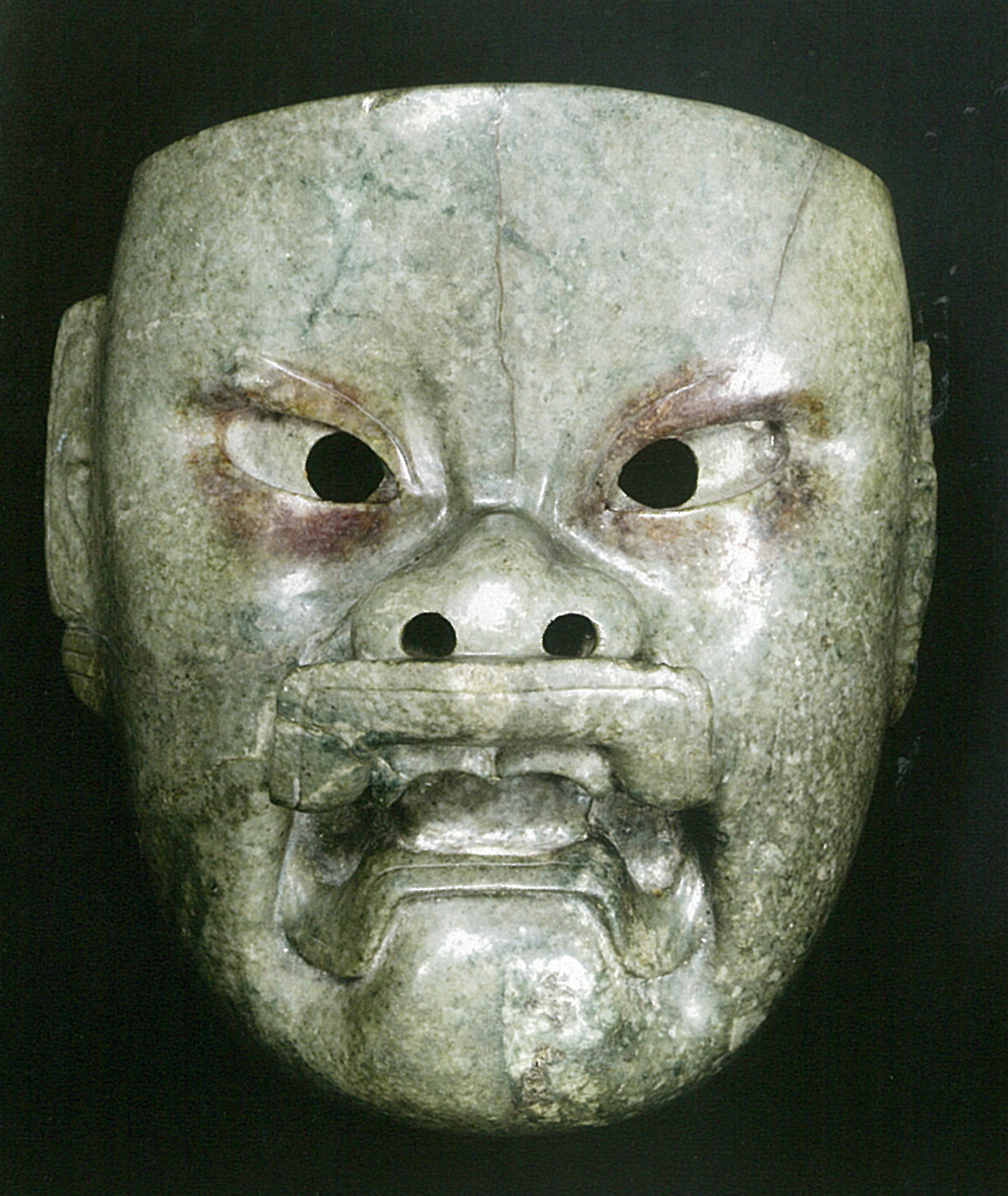
Mesoamerican rulers valued jade and other greenstones above all other luxury materials. Jade’s green color and shiny polish evoked agricultural fertility, particularly young sprouts of maize, the region’s staple crop. In the first millennium BC, the Olmecs buried large quantities of the greenstone as offerings in the sacred space of their monumental centers. Claiming divine status, later Maya kings and queens adorned their bodies with prized materials including jade jewels. Lapidary artists incorporated complex mythological motifs, hieroglyphic scripts, and images of deities into this elite regalia. Because the raw material was difficult to obtain and considered very precious, the Maya reused and recarved objects, including ancient Olmec jades, often passing down valuable and venerated heirlooms over many generations.
The splendor of Maya jade regalia is captured not only by the ornaments but also in their depictions on carved stone monuments, in mural paintings, and on painted pottery. These images bring the ancient courts to life, providing vivid records of nobles who wore elaborate costumes of jade and other materials such as feather, shell, bone, and textiles. Maya rulers received goods as tribute and gave them to their peers as part of diplomatic strategies. Ultimately, the most prized possessions were interred with their owners as funerary offerings.
BRIGHT KINGDOMS
Mesoamerica, AD 900-1521
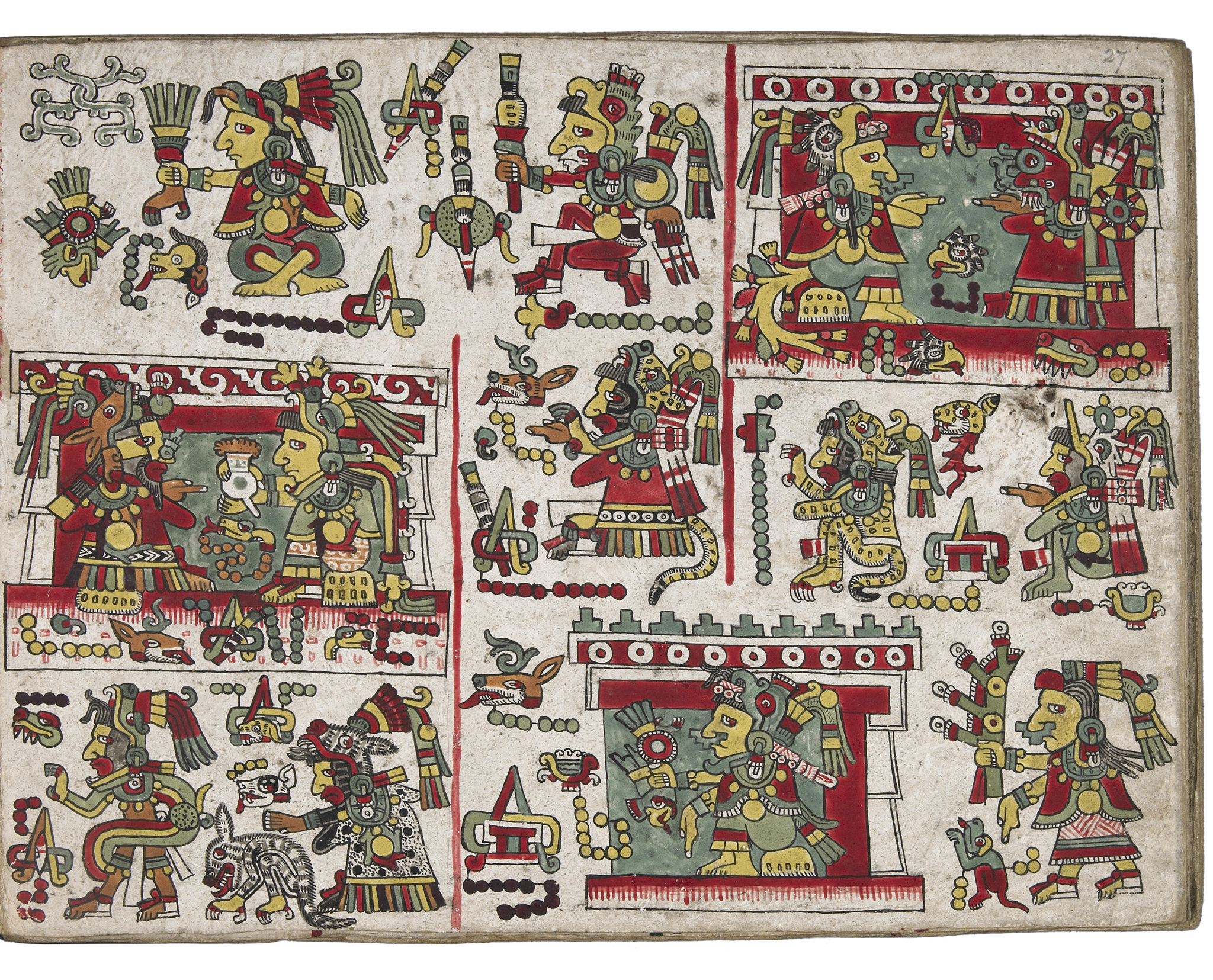
After the decline of the great Classic period civilizations in the ninth century AD, increased population movements and political instability led to the emergence of new Postclassic kingdoms and city-states, some of which rivaled the splendor of earlier times. Long-distance trade routes opened regions that had been less accessible, increasing access to exotic goods, and precious materials and luxury works circulated as gifts and tribute via elite exchange networks. The influx of new types of raw materials, such as turquoise from what is now the southwestern United States, as well as specialized technical knowledge, such as new metalworking techniques from South and Central America, spurred artistic innovation throughout the centuries that followed.
During the fourteenth century, the Mexicas, an ethnic group from the north, migrated to central Mexico and established themselves on an island in Lake Texcoco. Coming from humble origins, they quickly rose to power through military acumen and strategic marriages. Based in their capital, Tenochtitlan (today Mexico City), the Mexicas formed a political alliance with two neighboring cities, and together established the great Aztec Empire (also known as the Triple Alliance) that controlled large parts of Mesoamerica. The empire came to an abrupt end with the arrival of the Spaniards, who conquered Tenochtitlan in 1521.
FOR NEW GODS AND KINGS
Spanish Viceroyalties, Sixteenth Century
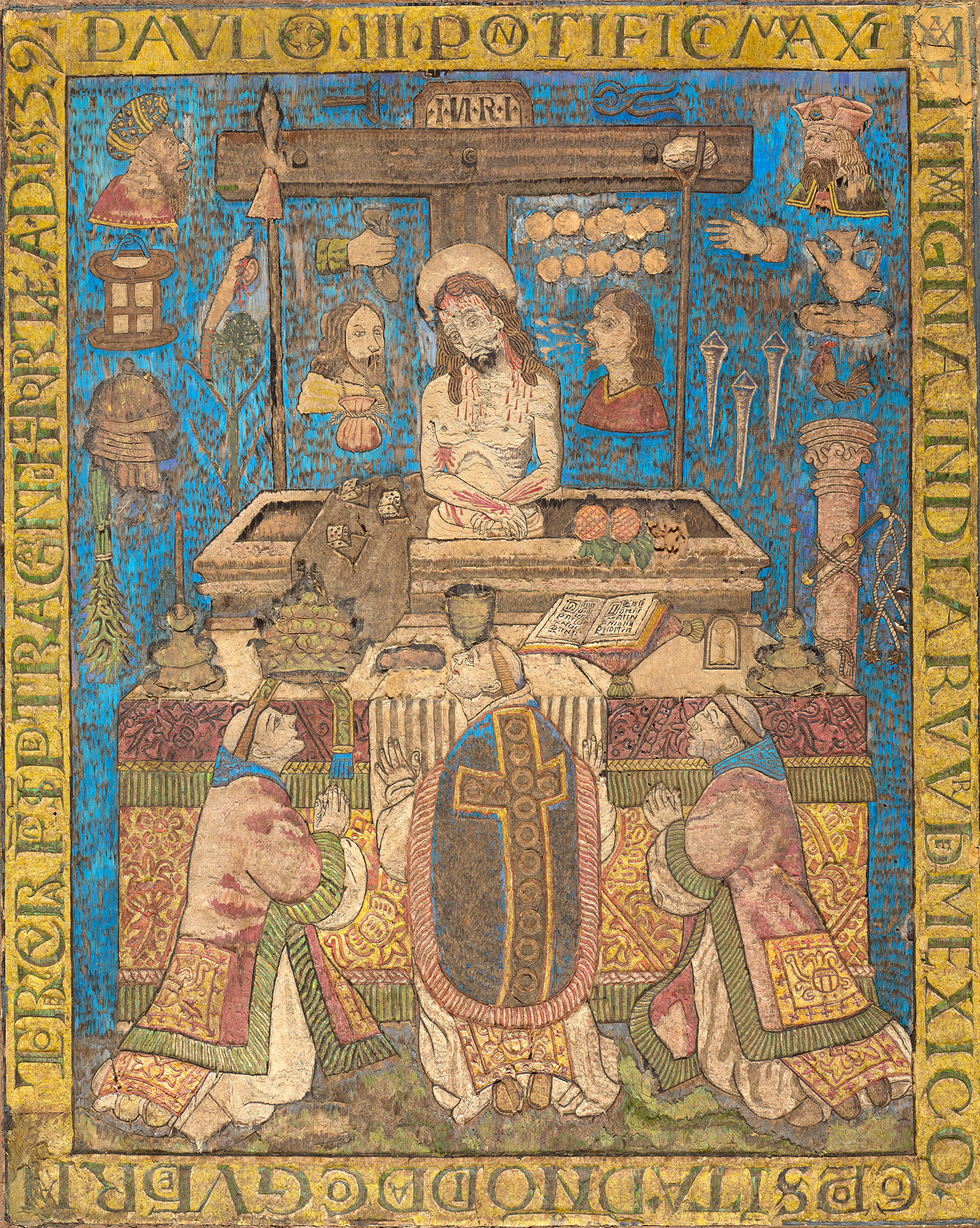
During the sixteenth century, the Spanish Conquest brought destruction to the indigenous cultures of the Americas. Local rulers were assassinated, temples were razed, and native populations were devastated by diseases introduced by Europeans. Once Spanish rule was established, the wealth of the Aztec and Inca Empires and a multitude of other kingdoms was appropriated and diverted to Europe, especially to Spain. Christian clerics arrived in the Americas, with the fervent mission to spread God’s word and extinguish pagan religions.
Indigenous peoples, especially in Mexico, were perplexed by the Spanish obsession with gold; they considered jadeite, turquoise, shells, feathers, and textiles to be far more valuable. In contrast, the Spaniards happily traded green glass beads for gold objects, which they melted down for easy storage and shipment. Despite this cultural rupture, indigenous artists adapted to the new colonial context and continued to practice traditional arts. This melding of customs and beliefs was especially evident in missionary schools, where native artists created Christian images and artworks in media such as feather mosaic. Soon the Americas were at the center of a global mercantile crossroads, in which exotic goods and artistic knowledge from Asia and Europe circulated and blended with ancient indigenous traditions.
